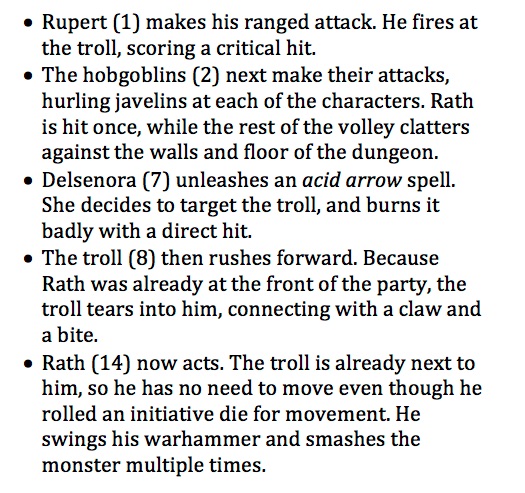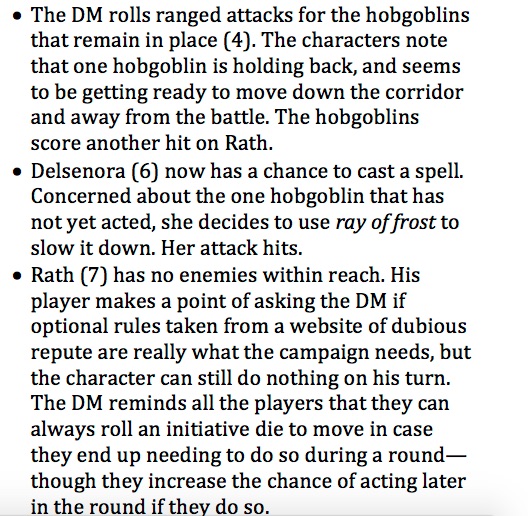D&D: Unearthed Arcana – The Greyhawk Initiative

Mike Mearls has gone mad with power and is seizing the initiative. So should you!
Well, he’s at the very least dedicated this month’s Unearthed Arcana to an experimental Initiative system. One based around the actions that players are taking rather than a single roll of the ol’ d20. It’s an interesting idea, one that adds a new tactical layer to the game. It ultimately places more emphasis on the economy of actions. Positioning becomes that much more important and unpredictable under this new system, but that can add some extra spice to the encounters.
Of course Shai-Hulud (may his passage cleanse the world) is another great way to add Spice to an encounter.
Let’s take a look.
via Wizards of the Coast
There are a few key changes made to the way Initiative works. Under Greyhawk Initiative, combat is still broken up into rounds, but within each round there are variable turn orders. You’ll roll your initiative each round, and that determines when you go in each round–effects that end at “the end of your next turn,” get a slight bump, ending instead at the end of the round your next turn is in. Meaning that if you’re fast enough, you could potentially get a little extra mileage out of some effects. Similarly, effects that end at “the start of your next turn” last until the start of the round your next turn takes place in.
The biggest change, though, is the way you determine initiative. Instead of rolling a d20 and adding your dex + any relevant mods, your initiative is determined instead by the action you take. Ranged attacks get a d4, movement and miscellaneous actions a d6, melee attacks a d8, and spellcasting a d10. If you want to do more than one thing, then add them together. Casting a spell as a bonus action, making an attack, and moving? Roll 1d4 + 1d6 + 1d8 and add them together. Only in this system, lowest goes first.
So the more you do, the slower you’re likely to go. Which brings us to the next big change–before the round even happens you declare your actions. So, if you’re hoping to get the drop on someone and make a melee attack, you can declare that you’re only making a melee attack, but, if any available targets beat your check and move away, that’s it you got nothing.
It’s a system that adds an extra layer of complexity to melee attacks especially. Ranged attacks, odds are you’re going first. Spellcasting, you might go last, but you can always just declare your targets later. And there’s usually someone in range. Ranged characters become that much stronger under this new initiative system. They’re able to act sooner and to guarantee their actions. But, if you want to move and melee then it’s 1d8 + 1d6 all day every day. Assuming you don’t have fancy plans for that bonus action of yours, in which case it might be 1d8 + 1d6 + 1d6-10.
Here’s an illustrated example, pulled right out of the .pdf for you.
 For his trouble, Rath has earned a claw attack to the face. But the saga continues.
For his trouble, Rath has earned a claw attack to the face. But the saga continues.
Now of course, this is like one of the worst case scenarios–and it highlights the tactical thought these new rules will bring to the game. Do you risk going first, or movement? I don’t know how well the system works out–I love the idea of variable initiative, but I’d be worried that it might bog the game down. For all the extra dice rolling, I imagine it’d keep the players more engaged from round to round. So I’m imagining that even if it slows the pace, it’ll up the engagement of the players.
Here’s Mike Mearls, courtesy of Dungeon Life with a little more about initiative, bonus actions and what actually is broken in an rpg.
https://youtu.be/hfSo4wVkwUw
Check out the Greyhawk Initiative
Of course if you can use some kind of cleric spell to aid your speed, then you’d be rolling a faith-based initiative.









